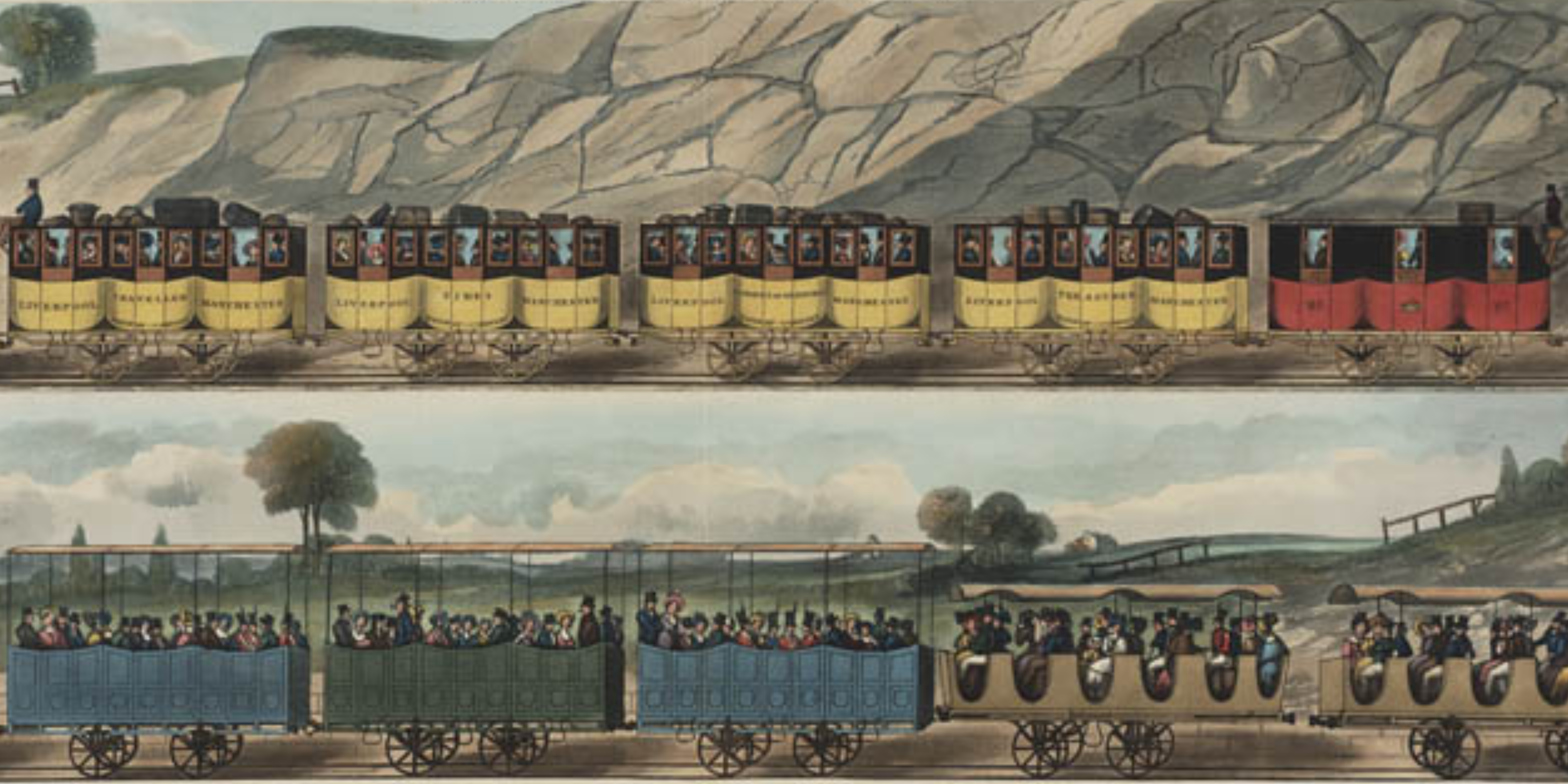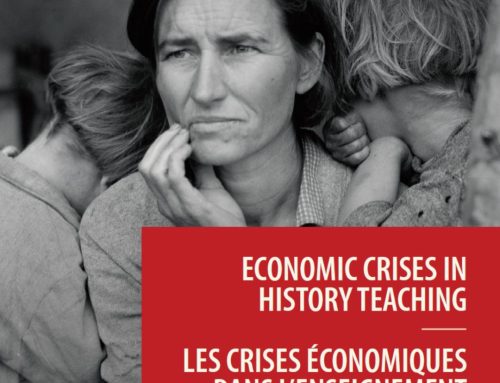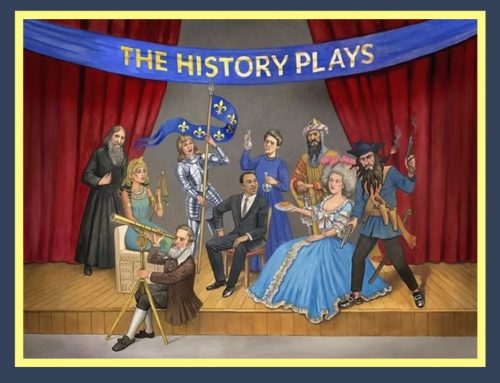Based on the Webinar Series: Using Historiana to Teach History from Different Angles
Session 4: “Railways and Connectivity” – Hosted by Bridget Martin
When learning about the Industrial Revolution, did you ask how coal and iron had been transported to manufacturing industries? When learning about modern wars, did you ask how military troops, ammunition, and food rations had been delivered to battles? When studying the partition of India in 1947, did you ask how millions of refugees had been able to move across dangerous borders? These questions are only a few examples that draw attention to the significance of rail connections – an important, but often overlooked element in many historical events.
Teaching about the roles of railways, therefore, can give students a new perspective on many well-known historical developments. But how can teachers do this effectively? Our webinar, hosted by Bridget Martin, tackled this issue with the help of “Railways and Connectivity” – a Historiana source collection compiled from Europeana materials. The webinar was the last session of our series “Using Historiana to Teach History from Different Angles.” Using historical sources related to railways, Bridget helped history teachers critically reflect on the concept of historical significance, and offered exciting ideas for Learning Activities on the topic of railways.
What does our Source Collection offer?
Bridget started the webinar by introducing the Source Collection “Railways and Connectivity” to participants. The fifteen items of the collection – consisting of maps, posters, drawings and photos – demonstrate many different uses of trains, which are ordered chronologically. The collection provides a global view of railways and connectivity, since it includes not only rail connections in Europe and the US, but also transatlantic connections and many examples from Asia. The key interesting point about the collection is that it allows for comparison in various aspects – namely, between different technologies, different purposes, and different impacts of railways in history.

Although this is designed as a complete collection, teachers are free to flexibly build their lesson on self-selected sources. They can use the collection for teaching thematic units, for example on technology, revolutions, or globalisation and transnational connections. They can also use specific or selected sources for the study of certain events or periods – such as the Industrial Revolution, the Boer War, the First and Second World Wars, and the partition of India, among many others.
Historical thinking: Evaluating Historical Significance
Before delving into the specific topic of railways, Bridget invited us to discuss the concept of “historical significance.” What exactly do we mean by this term? Our host drew upon Christine Counsell (2004) to divide ‘historical significance’ into 3 main levels. Significance of history – the broadest level – refers to the importance of history as a subject for study in general. Significance in history – more zoomed in – concerns the importance of a specific topic, event, or individual within the study of history. Lastly, significance in the context of historical accounts refers to the importance of different sources, interpretations, causes and consequences. The second and third levels, according to Bridget, are more relevant for history classrooms day to day.
How can we decide the significance of railways in history? For this query, Bridget led the audience through a detailed overview of various scholars’ approaches. An example is Geoffrey Partington (1980), who proposes 5 interconnecting criteria to measure historical significance. (1) Importance – How remarkable was this topic/event/individual for the people in the past? (2) Profundity – How deeply people’s lives have been influenced? (3) Quantity – How many lives have been affected? (4) Durability – People’s lives have been affected for how long? And (5) Relevance – How much has it contributed to an increased understanding of present life?
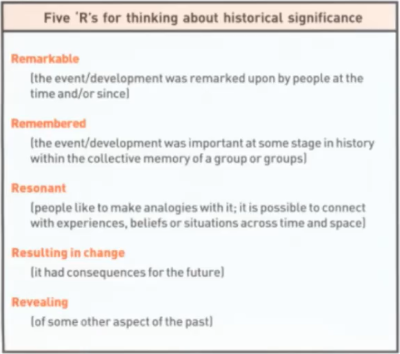
Christine Counsell (2004) uses a mnemonic device to outline her measures of historical significance.

Lis Cercadillo (2006) suggests a progression model to measure historical significance.
Other scholars that have also discussed this concept include Robert Philips (2002), Christine Counsell (2004), Lis Cercadillo (2006) and Stephane Levesque (2005). But why would their historiographical debate be relevant for history classrooms? The purpose, Bridget explained, is for teachers to be able to equip their students’ historical thinking with more depth and complexity. Oftentimes, students may find it difficult to justify their own arguments about how important a historical topic, event, or individual actually is. Discussing this concept in class, therefore, would prompt them to assess the relative significance of different historical factors, thereby giving them the language and evidence to substantiate their arguments.
Learning Activities Ideas
Using the Source Collection, the host proceeded to show us how historical significance could be examined through the topic of railways and connectivity. Bridget invited us to explore 3 key questions, each connecting to a broad theme: (1) Railways & Conflict, (2) Railways & Technology, and (3) Railways & Perspectives.
Railways & Conflict
How significant have railways been to modern conflicts? Many materials from the Source Collection showed us that train connections could play an important role in the causes, sequence, and aftermath of different wars.
We were surprised, for example, to learn that the outbreak of the First World War might have involved a railway connecting Berlin and Baghdad, also known as the Bagdadbahn. This connection boosted German economic power in the Persian Gulf at the expense of British and Russian interests in the region. Its construction thus upset the balance of power in the Gulf so much that, following the Allied victory in the War, the Treaty of Versailles decided to deprive Germany of its rights to the railway.

Berlin to Baghdad Railway (Bagdadbahn). Source: Mapa de los paises beligerantes con el ferrocarril de Hambugo a Bagdad, L Friederichsen und Co, Hamburg, Imperial War Museum via Europeana.
Railways were also integral to war efforts because they transported necessary resources to the battlefields. During World War I, troops and supplies could not have reached the fronts without using the light railway network. Before aerial evacuation was developed, hospital trains were what had enabled the delivery of medical services to soldiers. The transport of refugees resulting from the India-Pakistan partition was also facilitated by railways – without which, movement between borders would have been much more risky and time-consuming.
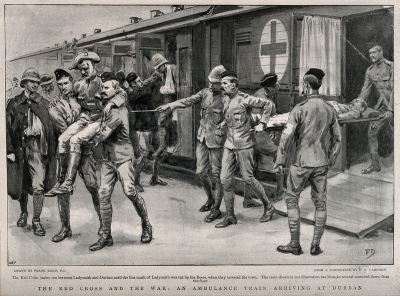
Hospital trains. Source: The Red Cross and the War: an ambulance train arriving at Durban, F. C. Harrison, 1899, London, Wellcome Collection via Europeana, V0015555.
These examples proved that railways were related to modern conflicts in a variety of manners. By asking students to research the historical contexts behind a specific source, teachers can deepen the students’ understanding of these relations, thereby adding nuances to their knowledge of famous historical events. Sorting the different railways in history according to their significance can also be a stimulating Learning Activity. Bridget showed us how this could be done with the Sorting tools on Historiana eActivity Builder, in connection to the criteria of ‘historical significance’ that we had discussed above.
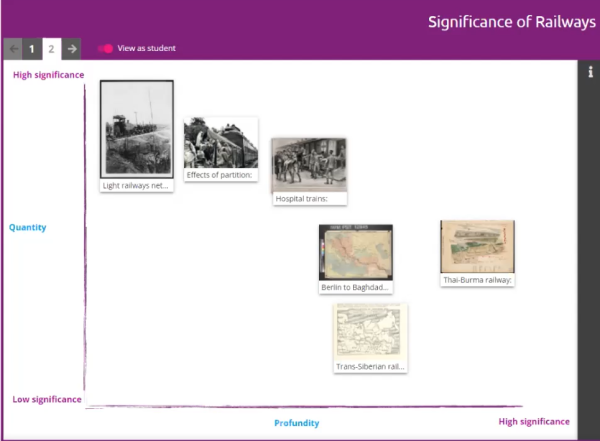
An example of Learning Activity, where students are tasked with sorting different railways according to different types of significance, using the Sorting Tools on Historiana eActivity Builder.
Railways & Technology
How significant were the impacts of advance in rail technology? Unlike the first Key Question, the second one would engage students more in comparing & contrasting, rather than sorting exercises.
Drawing upon the Source Collection, Bridget suggested a Learning Activity that put into comparison the Mumbles Railway (built in 1804 in Swansea, Wales) and the Liverpool & Manchester Railway (completed in 1830 in England). Many differences can easily be inferred – both from the pictures and from the Historiana descriptions. For example, while the horse-drawn Mumbles Train could transport only one carriage, the steam-powered Liverpool & Manchester Train could drag multiple wagons, and took a much shorter amount of time.
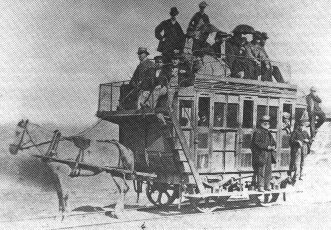
First passenger rail service. Source: Title Unknown, Creator of the Source Unknown, 1870, Wales.
This is where the various categories of historical significance come into use again. One can argue, for instance, that these technological advances in rail construction were significant in terms of quantity – that is, they enabled more people and more goods to be transported by railways. They were also significant in terms of profundity – considering how the fast communication and travel that they empowered had facilitated English trade and industrial production.
Their importance or remarkability to the people at that time can be seen through how the Liverpool & Manchester Train was nicknamed “The Rocket” by contemporaries. Moreover, as suggested by Philips (2002), we can also assess these developments in terms of their economic, political, social or cultural influence – to see how important they have been in each different category.
Railways & Perspectives
The third Key Question from Bridget concerned the issue of multiperspectivity. How significant was the development of railways for different groups of people? In other words, for which group was each railway the most or the least significant, and what type of significance are we referring to?
Our host took the example of the first transcontinental railway, which linked the Atlantic and Pacific Oceans as well as North and South America together. This railway was of great economic importance to many US companies and the US government, who benefited from the Gold Rush in the 1800s. However, for thousands of slaves and immigrants who participated in its construction, the railway meant no economic profits but only inequality, exploitation, and deaths. Countless slaves and labourers, coming from the US, the Caribbeans, Asia, Ireland and Australia, had perished while building this rail track due to poor working conditions and deadly diseases.
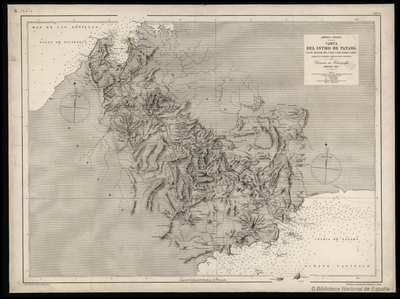
The first transcontinental railway. Source: Carte del Ustmo del Panama con el Trazado el Canal y del Ferro-carril, Dirección de Hidrografía, 1887, Madrid, National Library of Spain via Europeana.
Teachers can bring up a similar class discussion on the Thai-Burma Railway. Built between 1942 and 1943, this train connection served the military interests of fascist Japan during the Second World War, who were planning an attack on the British in Burma. They thus needed a route less exposed to Allied attacks in order to carry their troops and supplies from Thailand. The railway, therefore, was of military significance to both Japan and Allied powers, with the former benefiting from it and the latter in danger because of it. But again, this significance did not apply to hundreds of thousands of Southeast Asian labourers and Allied prisoners of war, who had been forced to construct this ‘Death Railway’, and due to which had lost their lives.
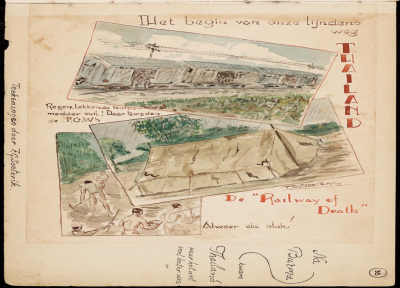
Thai-Burma Railway. Source: Thailand. De Railway of Death, F. G. Soeterrik, 1944, Museon via Europeana, 66591 (36/60).
Conclusion
Railways may not be the most well-known topic to be included in history lessons, but that does not mean they were insignificant in our history. Bridget’s webinar has revealed a variety of ways in which railways can complement students’ knowledge about modern conflicts, about economic and social history, and equip them with a multiperspective mindset. In relation to the concept of ‘historical significance’, students can also develop their historical thinking skills using source materials on rail connections. They can move beyond simple statements such as ‘Railways were very important’, and nuance their arguments by asking: In what ways have they been important? Are there any ways that they were not? For whom was each railway significant? How would I evaluate their overall impacts?
________
This blog post is written by Phạm Thùy Dung on the basis of Bridget Martin’s online session: “Railways and Connectivity.”
All images used are provided by the Europeana source collection by way of Historiana.
The recorded session of this webinar will soon be available on our YouTube channel!

